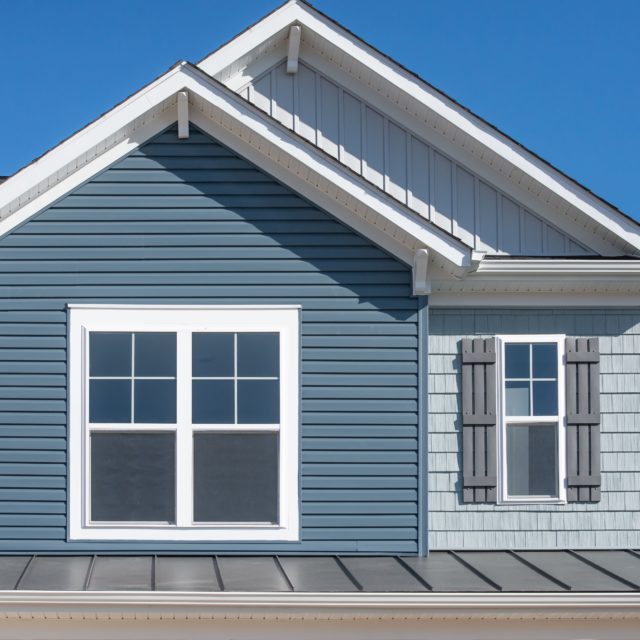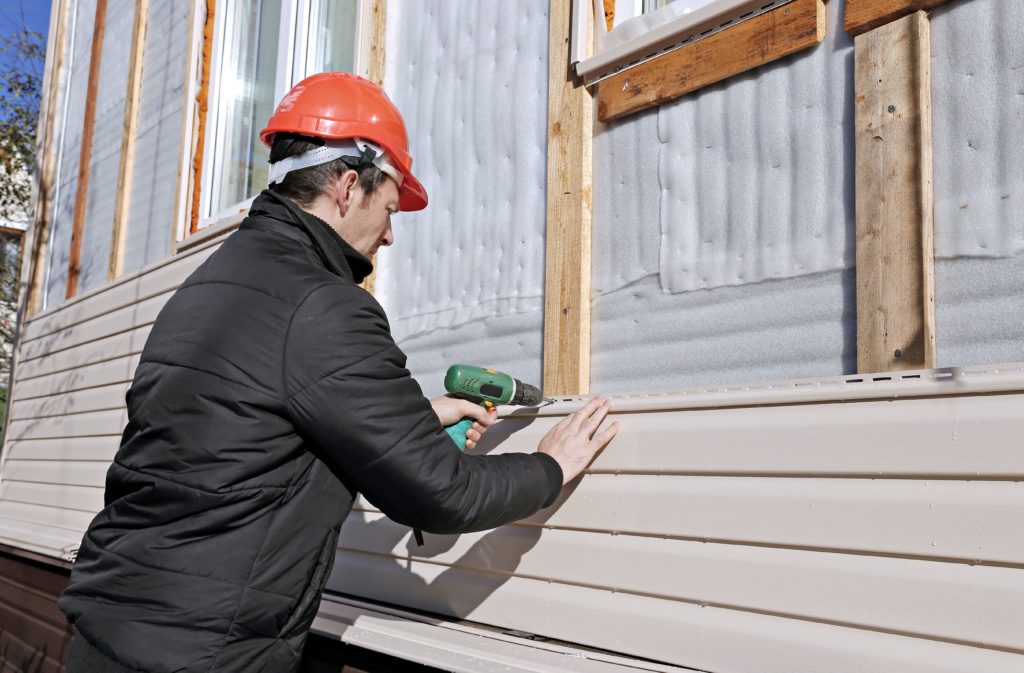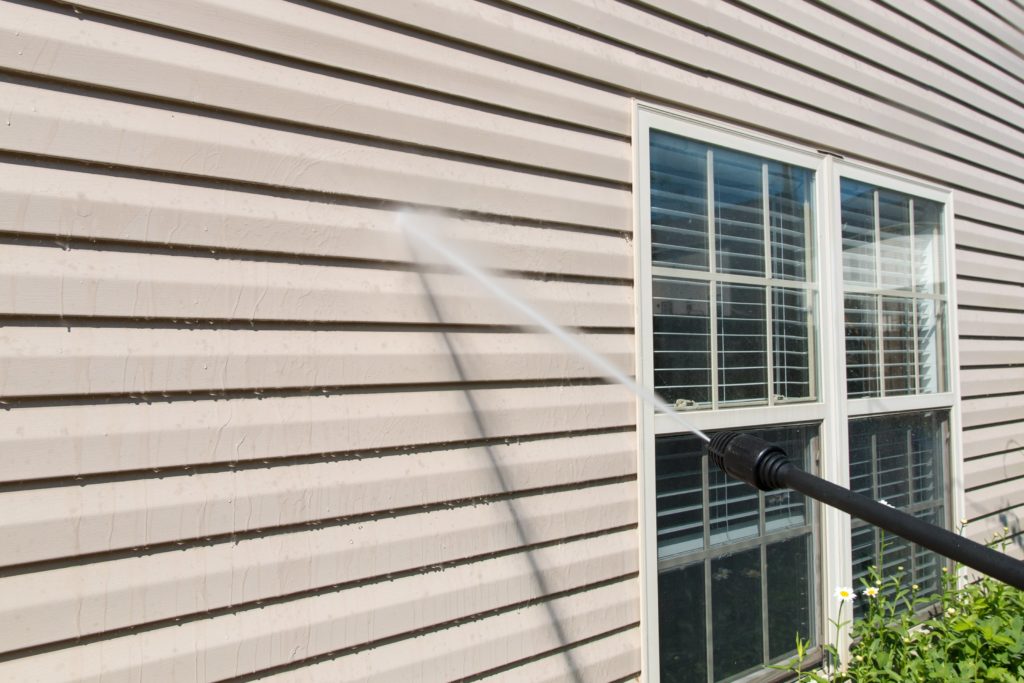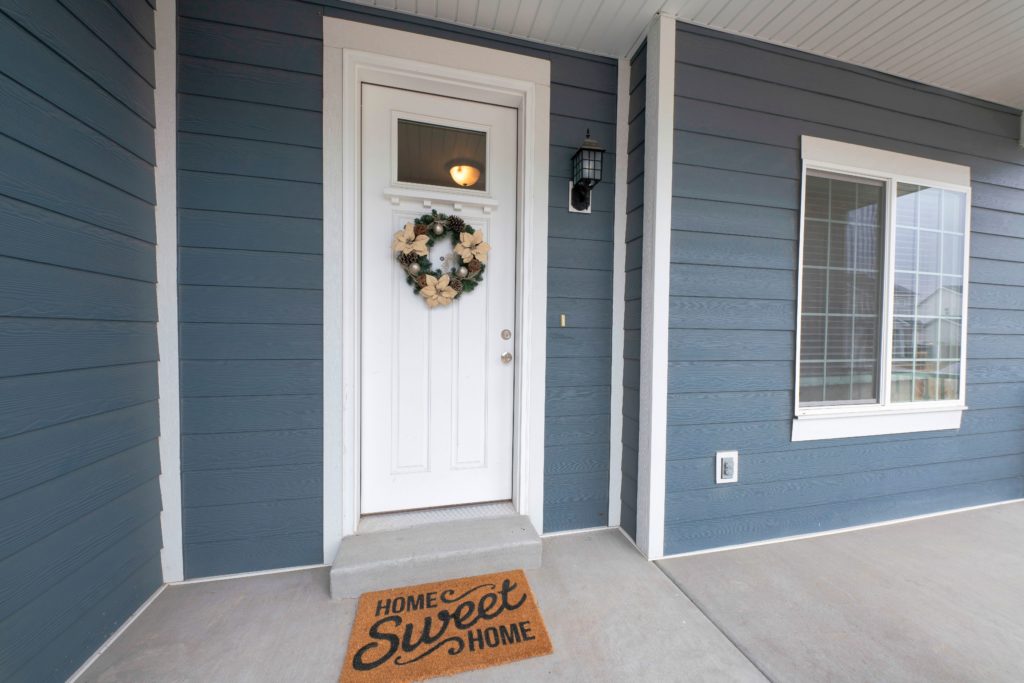Vinyl Siding Pros and Cons: Your 101 Guide

- Written by: jlbmdev

Most of your time is spent looking at your home’s interior, and that makes sense. After all, inside is where you spend the majority of your day to day. But most people only know your house from the outside. And while homeownership isn’t about keeping up with the Joneses, it’s important to consider the exterior of your home, even if it’s just to boost energy efficiency and resale value.
One of the best ways to enhance your home’s exterior is with high-quality siding. Let’s take a look at all vinyl siding pros and cons to help you determine if it’s the right fit for your home.
What is vinyl siding? It’s a plastic exterior siding manufactured to imitate wood clapboard that first hit the market in the 1950s. In its relatively short lifespan, vinyl has captured a significant amount of the U.S. siding market for new homes. One of the primary reasons for this is that it’s often — but not always — cheaper than cedar and redwood, and it takes less time to install.
The purpose of siding is to protect your home’s foundation and the contents within it from rain, snow, and wind damage. Well-installed siding also insulates your home from cold weather. High-quality vinyl is popular because it’s able to do this at a relatively low cost, compared to some other materials.

Vinyl siding is a residential favorite for a reason. We’ll dive into a few of the benefits of vinyl siding below.
There’s something to be said about the benefit of low-maintenance materials and items. The less time you spend maintaining something, the more time you can spend enjoying it. Vinyl siding allows you to do just this.
Speaking of low maintenance, one of the pros of vinyl siding is that it doesn’t require repainting. Unique to this material, vinyl siding has its color baked in, whereas almost every other type of material is coated with a color layer.
Today, most vinyl sidings are color fast. However, some are still co-extruded with a cap stock, especially if there is recycled content in them.
If you like options, then vinyl siding is your go-to. Almost any color you’re looking for is available in vinyl, allowing you to boost your curb appeal in a wide range of colors — from classic neutrals to trendy bold colors.
Every good thing has its downsides. Let’s take a look at some of the most common disadvantages of vinyl siding below.
Vinyl is popular and beloved by many for its durability and low maintenance. And on the front end, it makes financial sense to cover old and peeling wood with fresh new vinyl siding. However, there are two things to consider here.
First, if your home is historically significant or rustic, charm is part of its aesthetic (and thus a selling point), we wouldn’t recommend covering the exterior in vinyl siding. Second, houses with vinyl siding can look a bit flat, reducing some of the character that other types of exterior siding can provide.
High-quality vinyl siding can absolutely boost the resale value of your home if it’s replacing a complete eye-sore of siding. However, it’s typically not as luxury as some other types of high-quality wood and engineered wood siding.
If vinyl siding isn’t properly installed over the proper underlayment, it can trap the water vapor within the cavity of the wall. Although the same can be true of any exterior cladding.
To prevent this, you need to ensure you’re getting high-quality materials with expert installation. All in all, this isn’t a major concern if you’re working with a skilled and trusted contractor, but it’s still something to be aware of.
Concerned about water damage and leakage? Read our blog, House Siding Options: Prioritizing Moisture Management Within Your Home, to determine which type of siding is right for you.
It’s possible to paint vinyl siding. However, most major vinyl siding manufacturers do not honor warranties after the siding is repainted. Another word of caution: should your home experience damage that requires a claim, your insurance provider may not honor the claim if the vinyl has been painted.
Typically, vinyl siding is more likely to break on impact than a material like engineered wood. Especially as the temperature drops, vinyl siding is more susceptible to becoming brittle.
With that said, high-quality vinyl siding is a great choice for most climates, and you shouldn’t have to worry too much about your vinyl siding shattering on you.

On average, vinyl siding will last between 20-40 years. This depends on factors like weather and sun exposure, as well as the quality of the siding itself and the installation.
Concerned about your home’s carbon footprint? When weighing the pros and cons of vinyl siding, you may want to think about vinyl’s impact on sustainability. Vinyl siding is manufactured by synthesizing polyvinyl chloride (PVC), which in turn requires manufacturers to emit high levels of nitrogen oxide, dioxin, sulfur dioxide, and other gases and chemicals.
To ensure you’re reducing pollution as much as possible (from your end), be sure to find a high-quality building materials company that cares about its impact on the environment.
Even the best vinyl siding won’t amount to much without proper installation. Mistakes as simple as nails being driven too hard or too lightly can lead to issues like warping, improper insulation, and a number of other problems.
It’s important to find an expert contractor you can trust to ensure you’re getting the most out of your vinyl siding and to ensure it will look good and hold up for as long as possible.

After weighing the pros and cons of vinyl siding, this building material is ultimately an excellent choice for a majority of homeowners. Unless you want a specific look that only wood can give you, it’s hard to go wrong in most climates with vinyl siding. As a quick recap, vinyl siding is excellent because of its following attributes: